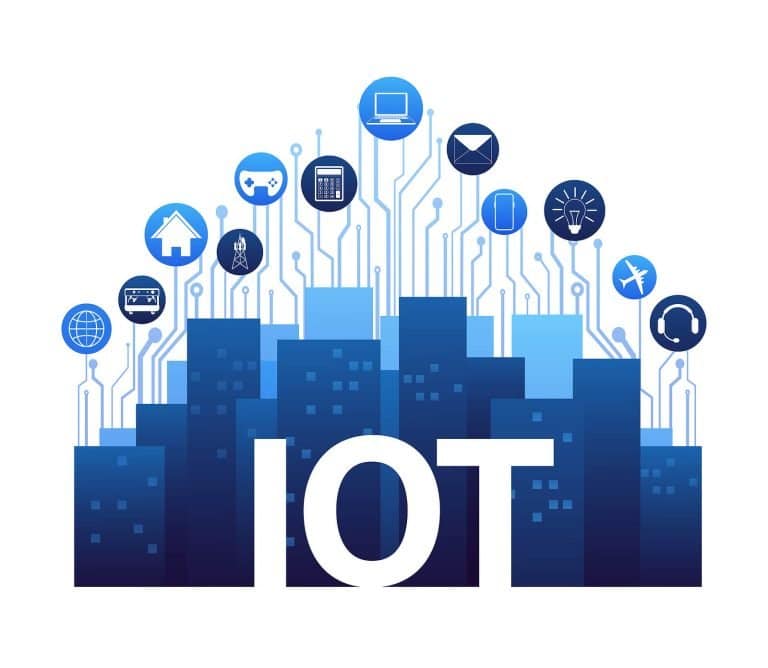As the world becomes more reliant on computer technology, the threat of cybercriminals becomes more pronounced. Hackers can attack more industries than ever before, from manufacturing to law. One of the most vulnerable sectors to cyber attacks is health care.
Table of Contents
ToggleThe COVID-19 pandemic forced a technological revolution in health care. Many doctors adopted telehealth practices to provide patients care without leaving their homes or office. Other sectors, such as administrative and clerical services, have been automated to streamline processes in the wake of staff shortages.
While the healthcare sector relies more heavily on computer technology, cybersecurity often needs to be improved. That’s what makes it vulnerable to crippling cyber-attacks — IoT in health care is particularly at risk.
How is IoT Used in Healthcare?
The Internet of Things, or IoT, is a digital infrastructure that enables smart devices to communicate with people and other computers. It is the technology that allows you to use certain features on multiple devices.
For example, your smartphone might tell Alexa what temperature you feel most comfortable at or receive your text messages coming in. Alexa can then read the messages out to you and use your preferences to adjust your home’s temperature.
IoT is used extensively in the healthcare industry. Wearable devices such as smart watches track your health statistics and communicate them to your phone — some even communicate directly with your doctor. Computers constantly communicate with each other, tracking patients’ health information. Hospital care providers can use smart devices to track their patients’ progress anywhere in the building or even outside of it.
IoT can make many healthcare companies and organizations more efficient than they have ever been. In addition to getting more care to people in need, it can also help with healthcare accreditation — allowing healthcare organizations to continue operating.
Health Care IoT Cybersecurity Risks
While the technology IoT brings to health care has made the industry more effective, it also comes with some risks. The chief among these is that IoT devices lack powerful cybersecurity protection and are vulnerable to hackers.
These hackers can gain access to IoT devices and do any number of damage to the computer infrastructure of a hospital or healthcare organization. At best, they may steal confidential patient information. At worst, they can hold an entire computer system for ransom — shutting down the operations of hospitals and delaying critical treatments and patient care.
These ransomware groups have only increased attacks on healthcare organizations. Studies show that the number of attacks doubled from 2020 to 2021 — a number that continues to grow. Cyber attacks against healthcare systems aim to cause as much havoc as possible — shutting down critical infrastructure to pressure the organization to pay the ransom.
How to Prevent Cyber Attacks on Healthcare
While preventing cyber attacks can be challenging, there are simple things healthcare workers on the ground level can do to help protect their IoT network. Practicing good cybersecurity habits can go a long way toward making the system harder for attackers to get into.
Regularly changing passwords and training staff on recognizing common scams such as phishing and vishing emails and messages is an excellent way to start taking cybersecurity seriously. In addition, strong Wi-Fi encryption — especially if your facility has public Wi-Fi available — will also prevent hackers from getting in.
Another way is to implement multi-factor authentication into your systems. These security protocols use a separate device, such as a smartphone, to authenticate a user’s credentials. Using multi-factor authentication prevents hackers from getting into the system, even if cyber attackers somehow obtain a user’s security information.
Another simple way to help keep hackers out of computer systems is to update your IoT software whenever updates are available. These updates contain patches for known security vulnerabilities, and not updating software means those vulnerabilities stay open.
Use Network Segmentation
Network segmentation is the practice of separating computer systems into smaller networks called subnetworks. Separating computer systems in this way makes it harder for cyber attackers to reach crucial systems and information because you can set up security protocols for each subnetwork.
In addition, network segmentation can help contain cyber attackers or malware used by them. Once they are detected in a subnetwork, the system can close off access to other routines to make sure the threat does not get away or reach other routines or information.
Network segmentation has other benefits, such as increased performance across the system as a whole and fewer access points vulnerable to cyber attacks.
Health care Must Improve Its Cybersecurity.
In the post-COVID-19 age, healthcare will become more reliant on computer technology as time goes on. Therefore, it’s more important than ever to begin improving cybersecurity. Threat actors can cripple hospitals and other care institutions without strong security at any time. Investing in and setting standards for cybersecurity is paramount to protecting patients — the greatest goal of all healthcare organizations.




